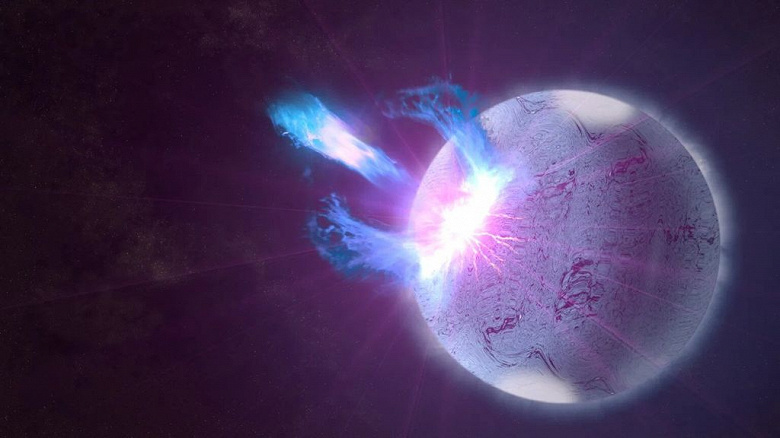Mysterious flares that periodically hit Earth may be the result of neutron star seismology
Originally discovered in 2007, fast radio bursts (FRBs) are invisible to the human eye but can be detected by radio telescopes. They come from beyond our galaxy, traveling billions of light years, and are so powerful that the FRB signal can outshine the entire galaxy they come from.
Despite this power (and the fact that up to 10,000 FRBs can occur over Earth each day), their source remains unknown, partly because the duration of such flashes is only one-thousandth of a second.
FRBs fall into two main categories. Some repeat and others do not, and these make up the vast majority of radio bursts. Moreover, the energy distribution of repeating FRBs is similar to the energy distribution observed during earthquakes. New research from the University of Tokyo has strengthened the case for this similarity, suggesting that radio bursts may be caused by the seismology of neutron stars.

Neutron stars have an extreme nature similar to FRBs. They are born when massive stars exhaust their supply of fuel for nuclear reactions and shed their outer layers in supernova explosions. This leaves a stellar core with a mass of one to two solar masses and a diameter of only 20 kilometers.
This rapid compression has three main consequences. First, it creates a substance so dense that one sugar cube from it would weigh about 1 billion tons. Secondly, some stellar remains can rotate at speeds of up to 700 revolutions per second. Finally, the star’s super-strong magnetic fields “compress”, increasing its strength and creating some of the most powerful magnetic fields known in the Universe.
Neutron stars may be sources of mysterious radio bursts
Young neutron stars with exceptionally strong magnetic fields are called magnetars and have previously been associated with FRB radiation. The theory of asteroseismology suggests that the surface of a neutron star may be subject to disturbances similar to earthquakes on Earth. One potential reason for this phenomenon could be the stress that occurs when their exceptionally strong magnetic fields twist.
“Theoretically, the surface of a magnetar could experience disturbances that release energy similar to earthquakes on Earth. Recent observations have resulted in a collection of thousands of FRBs, and we took the opportunity to compare large-scale FRB statistics with data from earthquakes and solar flares to explore possible similarities,” said one of the team members, Tomonori Totani from the University of Tokyo.
The team looked at the timing and energy of radiation from about 7,000 repeating radio bursts, using the same method used to analyze the time-energy correlation of earthquakes and solar flares. The results showed a significant correlation between FRBs and earthquakes, but not between FRBs and solar flares.
The team found four main similarities between FRBs and earthquakes. First, the probability of occurrence for an individual FRB and an earthquake is between 10% and 50%. Secondly, their frequency decreases with time, according to a power function of time. Finally, their speed always remains constant, even if the average number of FRBs changes significantly. At the same time, no correlation was found between the energy of the main ejection in both events and the shaking of the star’s surface.
This indicates that when neutron stars experience shocks and disturbances on their surfaces, they release enormous amounts of energy, which astrophysicists observe in the form of FRBs. To fully confirm this, the team will continue to analyze new FRB data as it becomes available.
“The interior of a neutron star is the densest place in the Universe, comparable to the interior of an atomic nucleus. Neutron star seismology has opened up new insights into very high-density matter and the fundamental laws of nuclear physics,” Totani said.




